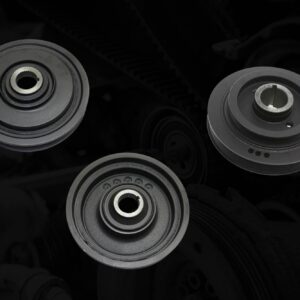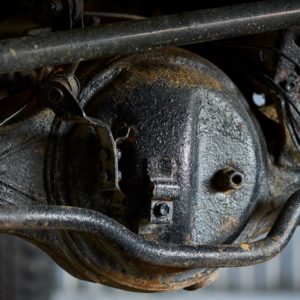The rear differential delivers engine power to the wheels and allows them to rotate at varied rates, particularly during turns. A hypoid gear set consisting of a ring gear and a pinion gear is used by the differential to shift the direction of engine torque so that the vehicle’s drive wheels turn as they should.
In order for your car’s differential to work, its gears and bearings should be properly lubricated with differential fluid. Your rear differential seal is a type of seal in your differential that prevents the fluid from leaking out.
There are multiple seals in the differential, and each of them serves a purpose. This is why it’s important to replace any damaged seal as soon as it is needed.
When Do I Need to Replace a Rear Differential Seal?
You may need to replace your rear differential seal at around 250, 000 miles. This should be part of your routine car maintenance check.
In some cases, you may need to replace it earlier than designed. Once you or a mechanic notices a puddle of oil beneath your car, you should have this seal checked. If it isn’t a damaged rear differential seal that’s causing the leak, another component might need servicing.
Listen for a grinding or whining noise as well. These sounds could also be an indication that your gears and bearings lack lubrication. Have a mechanic check your vehicle right away once this happens.
Checking for Differential Oil Leaks
But what if you don’t see any puddles of oil? How’d you know that your differential is leaking?
To check if your car has oil leaks, you can inspect the underside of the differential housing. You’ll notice if fluid is seeping out of your gasket or seals. Once you see any kind of leak, contact a trusted mechanic right away.
Other Causes of a Rear Differential Leak
Aside from a failed differential seal, there can be other reasons why your differential is leaking oil. For instance, the gaskets surrounding your differential also have a rubber component, so it’s common for them to degrade over time. An obstructed vent can also cause leaks. You can check out this article if you’d like to know more about rear differential leaks.

How Much Does it Cost to Replace a Rear Differential Seal?
The exact rear differential seal replacement cost can vary depending on the vehicle that you own. But if you’re looking for a ballpark figure, expect to spend around $120 for a replacement. The time it would take a mechanic to replace your differential seal can also vary per vehicle, so you have to take that into consideration when calculating labor costs. The rates will naturally vary depending on where you live.
What Does a Rear Differential Seal Replacement Entail?
The exact replacement process can vary depending on the vehicle that you own. Remember that vehicles can be structured differently per manufacturer. For example, the bolts on GM’s rear axle might not be the same as the bolts on other vehicles.
Let’s take the 1999 Firebird Trans Am as an example. To replace a rear axle pinion seal on a 1999 Firebird Trans Am, you’ll have to lift the vehicle with high-quality jack stands. After that, you can remove the torque arm from the differential housing to have a better view of the pinion. You’ll also have to take out the bolts on the driveshaft. This step is quite tricky because you may have to reposition your pinion flange to access the bolts.
Block the front tires to prevent it from rolling. Double-check to make sure that the transmission shifter is in Neutral. You can now slide the driveshaft forward to remove the u-joint from the pinion flange. Your transmission fluid would drain at this point, so make sure that you prepare the catch pan and tail shaft plug ahead of time.
You’ll have to mark the pinion, pinion flange, and pinion nut. You’ll also have to count the number of turns you did to remove the nut. Take note of this step because you’ll use these marks when putting the components back after installation.
After cleaning the area surrounding the seal, you can now remove the seal from the differential housing using a screwdriver. You can use a hammer to help install the new seal in place. If you have gear lube or bearing grease, you can apply it to the rubber. You’ll then have to insert the pinion flange onto the pinion. The process gets more complicated at this point because you’ll have to reinstall all the parts you’ve removed. You’ll also have to refill your differential with transmission fluid.
This process can be long and complicated—especially for a non-mechanic. If you’re not sure how to replace a rear differential seal, you can always ask a trusted professional to do it for you.
Is It Safe to Drive with a Differential Leak?
Technically, you can still drive your vehicle even if your differential is leaking. However, it isn’t advisable. That’s because your differential fluid would eventually run low. Once this happens, the gears in your differential can get damaged due to poor lubrication. To avoid further complications, take your ride to an auto repair shop right away once you notice a fluid leak.
Any information provided on this Website is for informational purposes only and is not intended to replace consultation with a professional mechanic. The accuracy and timeliness of the information may change from the time of publication.






























